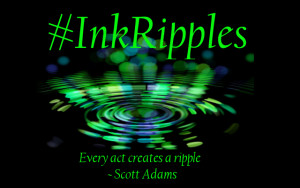I’m always happy to have a good writer friend guest on the Observation Desk, and LA is one of the best! It’s no wonder when I saw the answers on this author interview, which made me realize we have more in common than I thought. Check out her latest release GUARDIAN’S TOUCH, book two in the Touched by Afterlife series. There’s also a special running on book one GHOST TOUCH and a giveaway, so don’t miss out on those.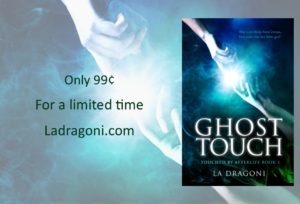
Final week of the Sale! http://www.ladragoni.com/
Welcome to the Observation Desk, LA. What made you want to become a writer in the first place?
Thanks for having me, Katie. Congratulations on your new baby. He’s adorable! (Thanks! 🙂 )
Like most writers, I’ve always written, but it was reading the Harry Potter series that really gave me the spark! I anxiously awaited the release of another book in the series, but I really missed Hogwarts. I thought to myself, “I can create a world of my own while I wait.”
GUARDIAN’S TOUCH is the second book in the Touched by Afterlife series. How does writing a second (or third or fourth…) book differ from writing the first one in a series?
It’s fun to write series because you know your characters that much better with each consecutive book. And usually your setting is familiar too, unless your characters travel around or are on a quest. For now, mine are still on Tamara’s farm, which is modeled after our old farm, a favorite place of mine.
What one book by another author do you wish you had written?
I really love emotional books. I recently listened to Me Before You by JoJo Moyes. Holy cow what a story. I had a book hangover for days. The characters popped into my head as if I expected to run into them at the store or find them in my living room when I returned home. I really didn’t want to let them go.
If you were stranded on a desert island and could only bring two books and one movie, what would you bring?
Goblet of Fire (the fourth Harry Potter, in case there is someone out there who doesn’t know that). It feels like the biggest turning point in the series to me. The kids are really growing up, the graveyard scene is so intense, the dance is fun, and dragons! What’s not to love?
One of Thoreau’s tomes. It wouldn’t really matter which one. They are all so impossibly long and filled with stream of consciousness and beautiful words.
It’s a toss up on the movie! Either the A&E version of Pride & Prejudice, because it’s long and I’ll have loads of time to fill, plus I’m a hopeless romantic and P & P is one of my favorite love stories ever. Or, Phantom of the Opera. Again, because it’s one of my favorite love stories, plus it has music and I like to fancy myself a good singer. I’m pretty sure I could be stranded for the rest of my life and never grow tired of that score!
What is your favorite part of the writing process? What is your least favorite part?
The first draft is my favorite part of the writing process. I’m a pantser – I write by the seat of my pants, without an outline. It never fails, about 2/3 of the way through the book I think I’ve written myself into a corner that I’ll never get out of and all of those smart things I set up have just become troublesome problems to solve. Then it all starts to fall together and I feel very pleased and extremely clever. You know how you wish you could read a really good book for the first time again? Because the discovery is part of the fun. That’s how the first draft is for me.
Least favorite part has become the marketing. Though I love to visit blogs (thank you!) and I enjoy social media, my efforts don’t always pay off and that is discouraging. My dream is to make enough money to hire an assistant.
What is the single best piece of advice you have for aspiring authors?
Read, read, read. Read books written for your target audience. Read best sellers and self-published and obscure. Learn what you like and what you don’t. When you are steeped in the books written for your target audience, then read everything else. If you write middle grade, read mystery for adults, if you write horror, read Christian romance. You will pick up on techniques that you might not have seen before that you can incorporate into your own work.
What is next for you in your writing career?
Thanks for asking! I have a time travel romance publishing in November that I’m super excited about. Readers can subscribe to my newsletter to keep up to date on that release and to be among the first to see the gorgeous cover! And I’m writing the third Touched by Afterlife book now and hope to release it in spring of 2018. I can’t even tell you the name, because it would be a bit of a spoiler for Guardian’s Touch.
Thanks for having me Katie. Good luck to your readers in the giveaway!
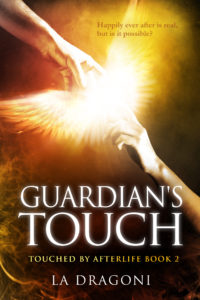 GUARDIAN’S TOUCH blurb:
GUARDIAN’S TOUCH blurb:
Life has returned to normal for Tamara and Dex after helping a horde of ghosts cross over. Their brush with the afterlife affirmed one thing: happily ever after is real.
When odd pranks around the farm escalate to destruction, Tamara fears mischievous teenagers are vandalizing the neighborhood. Then Dex starts to act out of character. Meanness slips into his usually playful disposition. One day he even ridicules a co-worker publicly. Tamara watches helplessly as he seems to lose the ability to control his own actions. When Dex’s abnormal anger turns violent—toward Tamara—their happily ever after is threatened. Desperate to help Dex and herself, she sends out a silent prayer for help.
She didn’t expect Cal to come to her aid.
Available on Amazon.
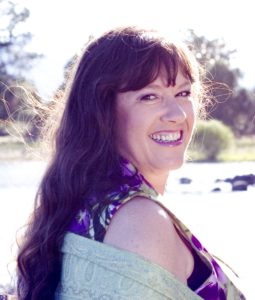 About the Author:
About the Author:
LA Dragoni isn’t too particular about who falls in love or where they fall in love. Whether it’s paranormal, mythical, or time travel, LA simply considers it her job to divine their story and share it with you. She lives in Central Oregon with her husband and children, but haunts ghost towns and cemeteries throughout the west, in search of the next adventure to sift through her storytelling brain. Learn more about LA and her work at ladragoni.com
Newsletter| Facebook| Twitter
a Rafflecopter giveaway
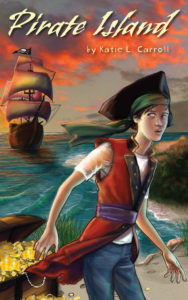 So by now most of you know that I have a book coming out soon (since I’ve been talking about it ad nauseam here!), my middle grade adventure PIRATE ISLAND. The paperback and e-book are available for pre-order on all the major book selling sites. And while it doesn’t officially release until October 17, I will have copies for sale at Indie Author Day at the Norwalk Public Library!
So by now most of you know that I have a book coming out soon (since I’ve been talking about it ad nauseam here!), my middle grade adventure PIRATE ISLAND. The paperback and e-book are available for pre-order on all the major book selling sites. And while it doesn’t officially release until October 17, I will have copies for sale at Indie Author Day at the Norwalk Public Library! 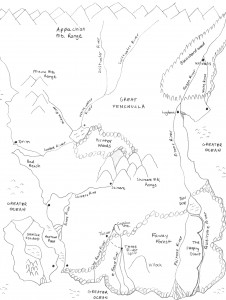
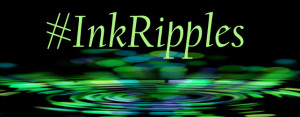
 When it comes to publishing a book, there are so many more options than there used to be. If you’re new to the business, it can be downright overwhelming and confusing to decide what publishing path is the right one for you. That is why we decided to tackle the topic in this month’s
When it comes to publishing a book, there are so many more options than there used to be. If you’re new to the business, it can be downright overwhelming and confusing to decide what publishing path is the right one for you. That is why we decided to tackle the topic in this month’s 